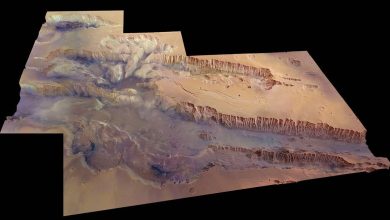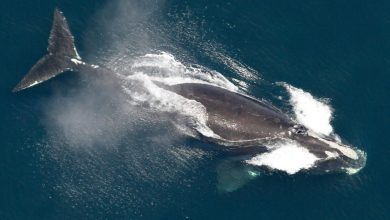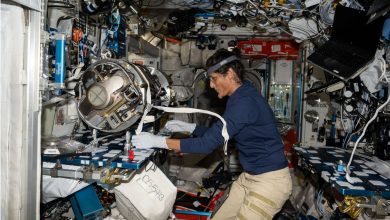SpaceX launches NASA’s resupply mission amid challenging weather conditions | Technology News

SpaceX successfully launched NASA’s cargo resupply mission to the International Space Station (ISS) this morning, taking advantage of a brief opportunity between bouts of difficult Florida weather.
The mission, designated as Northrop Grumman-21 (NG-21), lifted off from Space Launch Complex 40 (SLC-40) at Cape Canaveral Space Force Station at 11:02 a.m. ET.
Despite earlier concerns about adverse weather, the launch window proved fortuitous. Tropical cyclone impacts had cast a shadow of uncertainty over the mission, but conditions improved sufficiently to allow for a successful liftoff.
SpaceX’s Falcon 9 rocket carried Northrop Grumman’s Cygnus spacecraft into orbit, marking the beginning of its approximately 40-hour journey to the ISS.
The Cygnus spacecraft is expected to deploy its twin circular solar panels about two-and-a-half hours after launch.
The launch had been rescheduled from the previous day due to unsettled weather conditions, with officials expressing concerns about strong southeast winds and unpredictable weather patterns.
Melody Lovin, a launch weather officer with the 45th Weather Squadron, had noted the challenging conditions but remained hopeful for a successful launch on Sunday.
Story continues below this ad
“We are not within the cone of the center. However, tropical cyclone impacts do extend far and away from the center,” Lovin said. “So, because of that, Sunday looks like incredibly tricky weather for us, if we do need to utilize that backup launch window.”
The Falcon 9 rocket’s first stage booster, which supported this mission, is now on its tenth flight. This booster previously launched a variety of missions including Ax-2, Euclid, Ax-3, CRS-30, SES ASTRA 1P, and four Starlink missions.
Following stage separation, the first stage successfully landed on Landing Zone 1 (LZ-1) at Cape Canaveral Space Force Station.
Onboard the Cygnus spacecraft are several scientific experiments and technological demonstrations.
Story continues below this ad
These include tests of water recovery technology, a process for producing stem cells in microgravity, studies on the effects of spaceflight on microorganism DNA, liver tissue growth research, and live science demonstrations intended for educational purposes.
In addition to this successful launch, Northrop Grumman and Firefly Aerospace are advancing their work on the Antares 330 rocket, which is scheduled to debut in 2025.
This new rocket will feature seven Miranda engines for its first stage and the Castor 30XL solid rocket motor for the second stage, continuing the lineage of the Antares 230.
A live webcast of today’s mission was available approximately 20 minutes prior to liftoff and can be viewed on SpaceX’s website and social media platforms.




